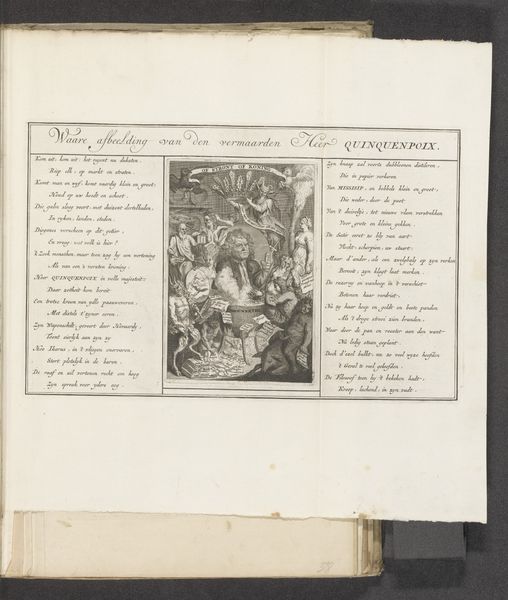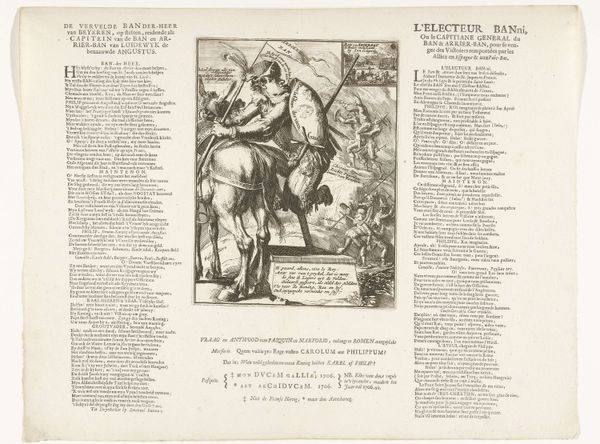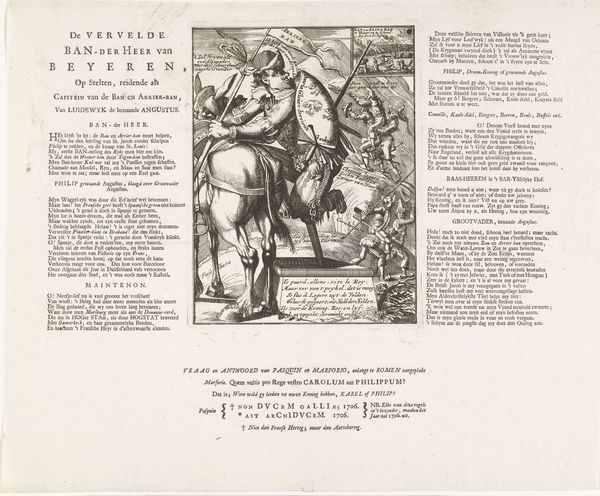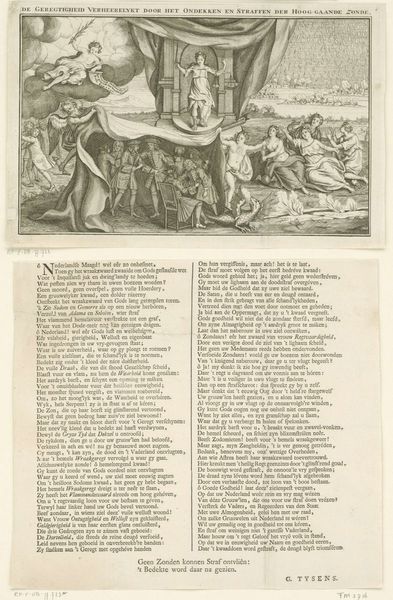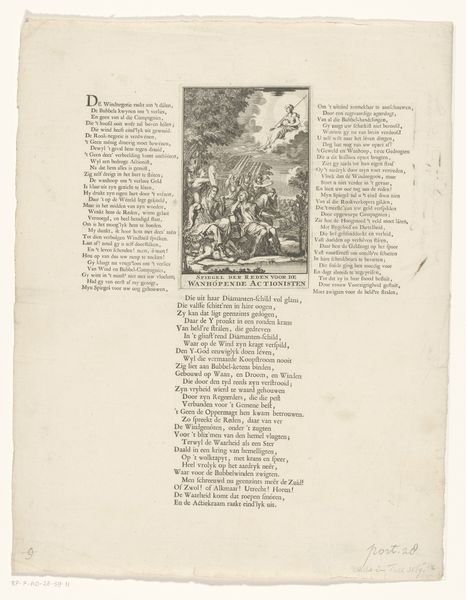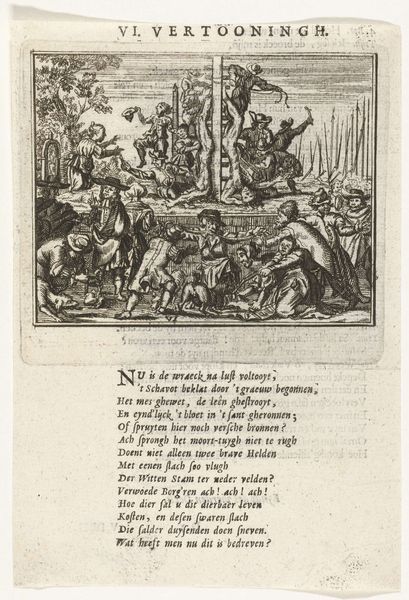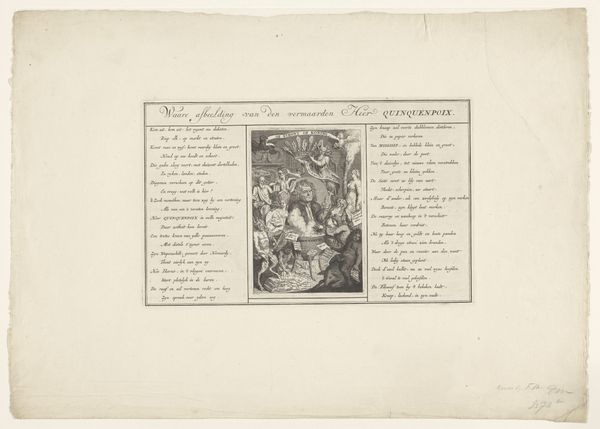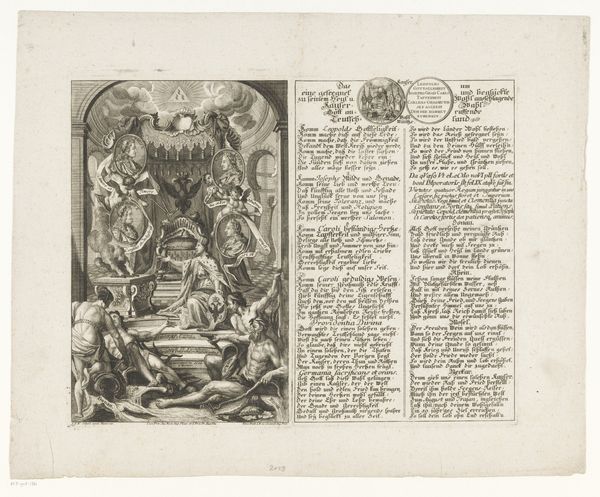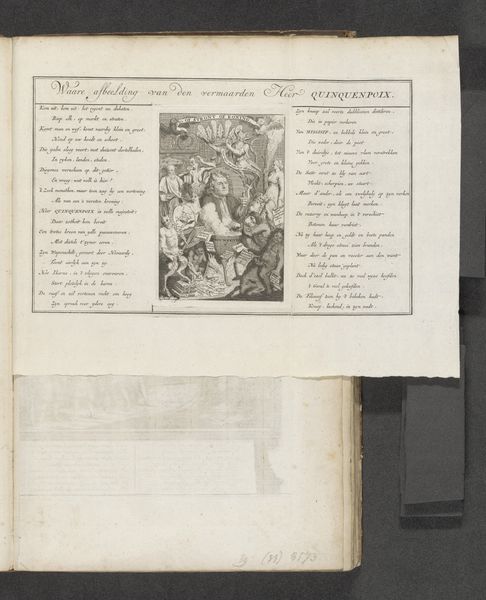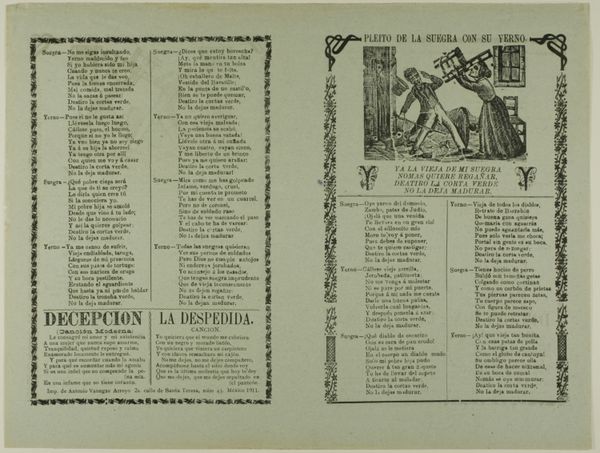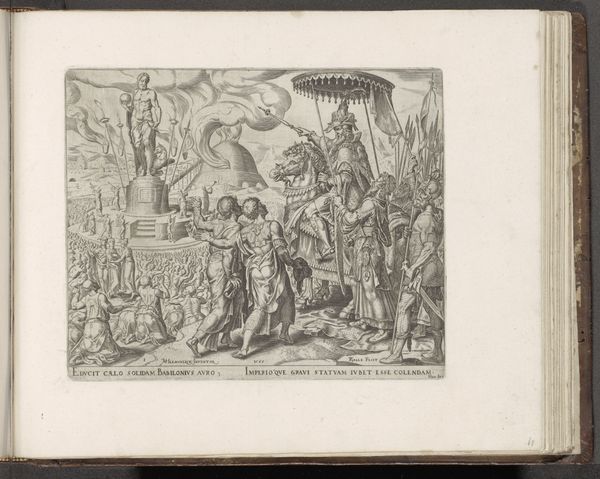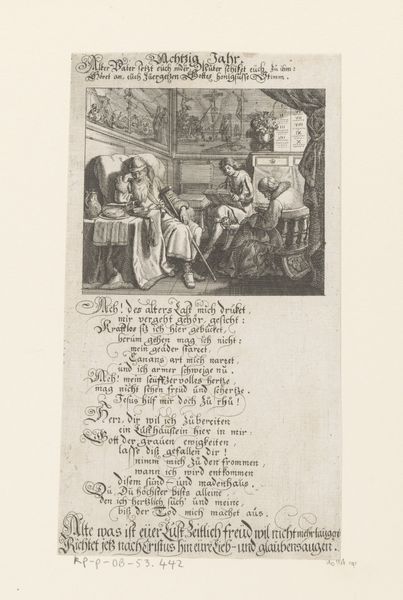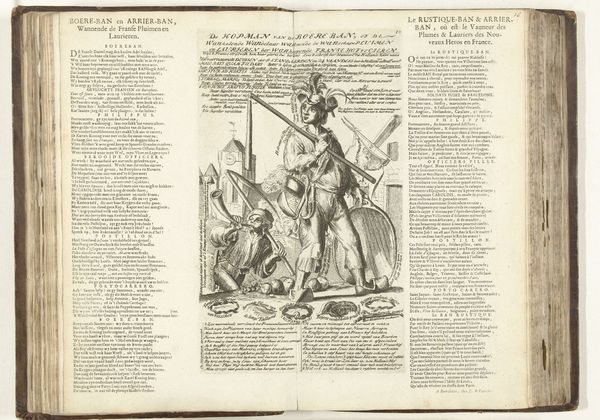
graphic-art, print, engraving
#
portrait
#
graphic-art
#
baroque
# print
#
engraving
Dimensions: height 154 mm, width 104 mm, height 225 mm, width 322 mm
Copyright: Rijks Museum: Open Domain
Curator: We’re looking at "Ware afbeelding van de heer Quinquempoix," or "True Portrait of the very famous Seigneur messire QUINQUENPOIX." The print was created between 1712 and 1720 by Bernard Picart. It’s an engraving and part of the Rijksmuseum's collection. What strikes you about it? Editor: My initial impression is one of chaotic excess. There's an almost frantic energy to the composition, heightened by the exaggerated expressions and allegorical figures crowding the central portrait. It feels like a satirical critique of wealth and folly. Curator: It's certainly a biting satire. Picart employs baroque stylistic elements—the dramatic diagonals, the ornate detailing—to depict Quinquempoix as the emblem of vanity. Editor: Absolutely. Quinquempoix isn’t merely presented as an individual, but as a representation of a specific moment: the speculative frenzy surrounding John Law's Mississippi Company. Curator: Precisely. Notice the text framing the portrait, detailing financial woes and madness related to speculation in state bonds. It positions him within the moral landscape, cautionary tales for a public blinded by greed. We have Diogenes, looking to expose that. Editor: And what is your eye drawn to most prominently? Curator: My attention is caught by the use of visual rhetoric. The figure is enveloped by literal flames which lead to infernal symbols alluding to a debased state of affairs. Diogenes looks from one corner while naked satyrs adorn the other corners, to remind of human vice. Editor: All while the engraving points to those contemporary realities, serving as a critical commentary on unchecked financial speculation and the societal madness that accompanied it. The symbolic language underscores its sharp perspective. Curator: Exactly! And understanding those symbols is key to unlocking its full meaning as a pointed critique of a specific historical event. Editor: I see this work as more than a time-specific document. The questions it poses about economic disparities and personal morals remain sadly and troublingly relevant. It’s still speaking to audiences in modern times, and thus acts as a vital mirror reflecting enduring themes. Curator: A fair point, emphasizing art’s ability to transcend its own time. Thank you for sharing. Editor: And thank you! I’ll take it all under advisement as I delve into its meanings and purpose.
Comments
No comments
Be the first to comment and join the conversation on the ultimate creative platform.
